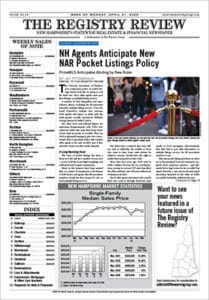The ability of lenders to come up with creative new products that seize would-be borrowers’ attention is never-ending. Anything to get a customer in the door.
Now you can obtain financing in 24 hours, or you can nail down a mortgage for as little as 1 percent down. And if you fall behind on your government-backed loan, the Federal Housing Administration is floating a novel idea to keep your place from being repossessed.
First up: The “Same Day Mortgage” from Guaranteed Rate is exactly as the name suggests. In less than 24 hours, you’ll know whether you have the loan or not. No more waiting anxiously for the loan approval to arrive in the mail. It’s as close to instant approval as you can get – subject, of course, to credit and underwriting approval. And there are limitations.
The loan, which is available in fixed- and adjustable-rate versions, was rolled out this spring. Prior to that, it was offered on a limited basis, and Guaranteed Rate still managed to book more than $1.1 billion in Same Day business. Now, volume has passed the $2 billion mark, with some borrowers gaining approval within four hours.
The one-day loan could be a real game-changer for first-time homebuyers, who are at a distinct disadvantage when they go up against all-cash purchasers. With such rapid approval, first-timers can offer the same thing cash buyers offer: speed to the closing table. It “levels the playing field,” said a company statement.
Ultra-Low Down Payment
Next, the new “1 percent down” mortgages. These loans for low-income would-be buyers come from Detroit-based rivals United Wholesale Mortgage and Rocket Mortgage. Both mainly fund loans written by mortgage brokers.
To say the two are rivals is an understatement. They are actually bitter foes, with UWM going so far as to warn brokers who do business with Rocket that they are no longer welcome at its counters.
In the spring, UWM offered loans with 1 percent down, promising to provide the remaining 2 percent (up to $4,000) as a grant. Taken together, that 3 percent down payment would qualify the loans as conventional mortgages, eligible for purchase by Fannie Mae and Freddie Mac.
The mortgage sounded good on its surface. But many lenders balked, saying the rules were much too narrow and wouldn’t make much of a difference for most buyers. And only people earning 50 percent of the area median income were eligible.
Soon, Rocket jumped in with its version of 1 percent-down financing. It, too, offered to cover the 2 percent difference, but with no limit on the amount. Plus, it did away with the need for private mortgage insurance, which is required by lenders when the borrower puts down less than 20 percent.
Rocket also raised the income limit to 80 percent of the area median. Not to be outdone, UWM announced enhancements to its product, including raising its income eligibility to match Rocket’s 80 percent ceiling.
Most recently, Guild Mortgage launched its own 1 percent-down mortgage for those earning 80 percent or less of the local median, with the lender providing 2 percent of the purchase price to get the loan-to-value ratio to 97 percent. The San Diego-based Guild also will buy down the interest rate by 1 percentage point for the first year.
Will It Help Consumers?
All this competition should go a long way toward increasing access to homeownership for low- and moderate-income families. Based on publicly available income data, Rocket estimates more than 90 million people can meet the income requirements for its program.
The company offered this example: On a $250,000 loan, the typical 3 percent down payment is $7,500. But a 1 percent down payment means the buyer would need just $2,500, with Rocket putting up the remainder. And the lack of mortgage insurance on the loan would lower the buyer’s monthly payment even more.
Meanwhile, the FHA, which insures lenders against the possibility that a borrower will default, said the run-up in interest rates has limited the effectiveness of some of its loss-mitigation tactics, which are designed to keep financially troubled owners from losing their homes to foreclosure.
So, the administration has asked for feedback on what it calls an “innovative approach” – one that would allow mortgage servicers to file partial claims against the FHA insurance fund to bring struggling customers’ mortgages current and trim their monthly payments for up to five years.
Currently, many of the tools and policies designed to help struggling owners do so by reducing their monthly payments. But that isn’t as effective as it used to be because borrowers have to modify their loans at today’s interest rates, which are often higher than what they are already paying.
A partial claim, on the other hand, is a subordinate zero-interest lien against the home. Borrowers would pay it back to the FHA when they sell the encumbered property.
“When we saw that our existing loan modifications were no longer providing adequate payment relief,” said FHA Commissioner Julia Gordon, “our team painstakingly explored every possible alternative to provide relief in the current rate environment, resulting in this innovative proposal.”
Lew Sichelman has been covering real estate for more than 50 years. He is a regular contributor to numerous shelter magazines and housing and housing-finance industry publications. Readers can contact him at lsichelman@aol.com.

